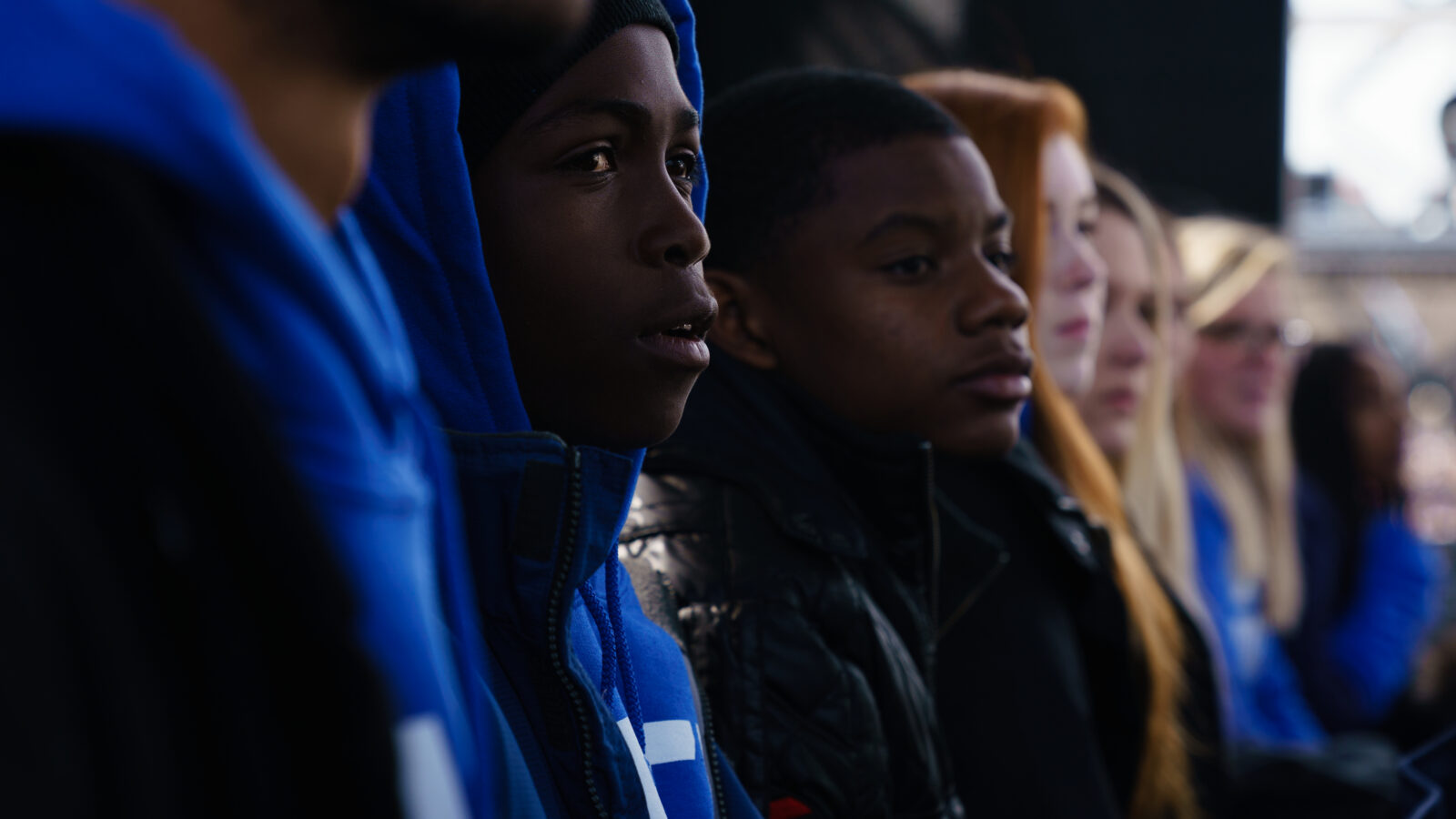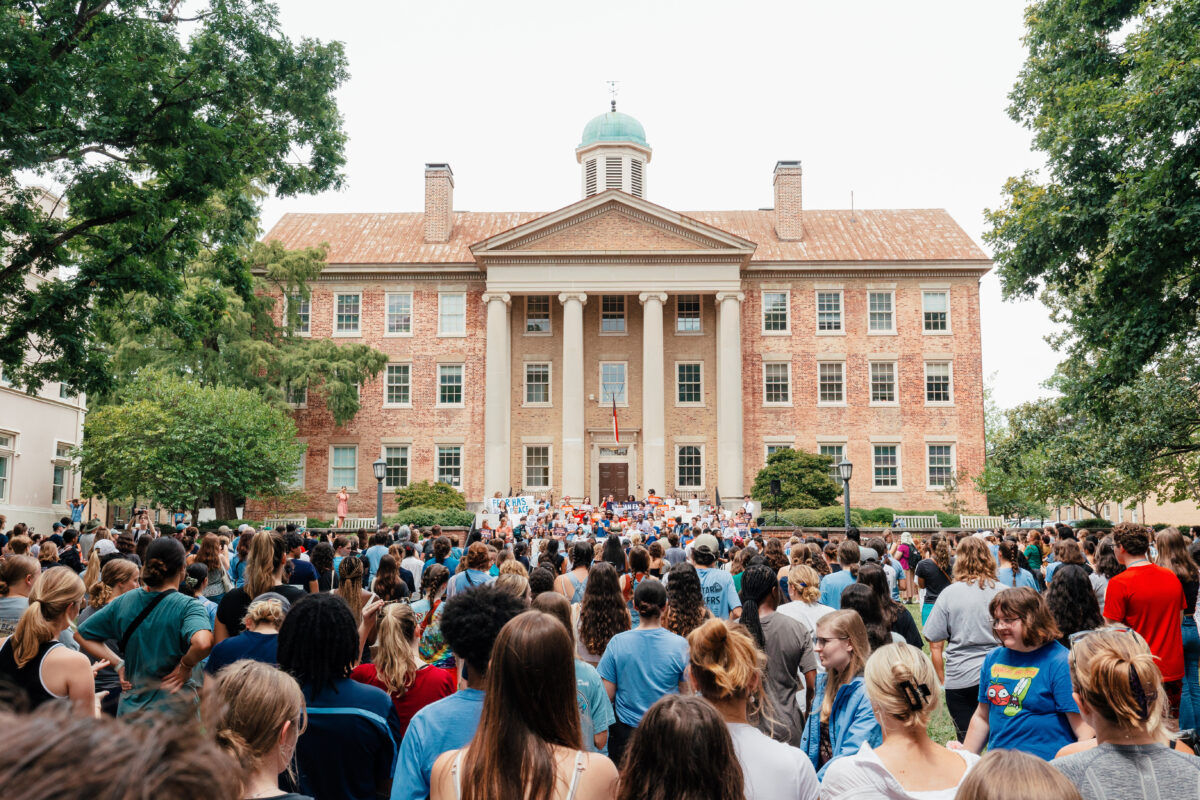It Ends With Us

WHAT WILL IT TAKE TO END GUN VIOLENCE AND CREATE SAFE, HEALTHY, AND THRIVING COMMUNITIES?
What will it take to create safe communities?
Every day in America, more than 120 people are killed by guns. The deadly epidemic of gun violence permeates every corner of American life and for the last three years in a row, guns have been the leading cause of death for young people in America – far outpacing cancer and car accidents as of 2020. Whether at home, school, the movie theater, the bowling alley, our graduations, or at our places of worship, everywhere we look gun violence is decimating our families and communities, and is a defining feature of life for an entire generation of young people.
This is our plan to end this scourge. March For Our Lives was founded to say, “No more.” No more burying loved ones. No more American exceptionalism in all the wrong ways. This plan is a roadmap to build a world that turns the status quo on its head.
Learning from activists, civil rights leaders, and so many others who came before us, we developed our framework for change, the first of which was released in 2021 and we’ve continued to update it since. As we’ve updated our policy plan, we’ve been heartened by the tremendous progress the movement has made—each victory notched, small or large, part of a building tide against the status quo. Having made tremendous progress since we were founded in 2018, this policy plan is an update on our vision to build a world free of gun violence.
This policy agenda is a significant update from our previous one, largely because we’ve learned a lot as a movement. As more data becomes available about policies that work, strategies like community violence intervention take on a new texture in this agenda. As new threats crop up, we are lifting up new solutions to stem the flow of firearms, like a proposal to limit “buy now, pay later” marketing schemes that open the door to quick, easy, and dangerous access to firearms.
And, of course, we needed to update this agenda because March For Our Lives has helped usher in a new era in gun safety legislation, and we’ve happily seen several of our previous policy proposals be adopted by President Biden, Congress, and state legislatures. This progress, including a proliferation of Offices of Gun Violence Prevention in the White House and at the state level, expanded funding for community violence intervention, and tightening of loopholes and background checks, is our top priority to defend—and to build upon.
This agenda begins with our philosophy, guided by data, on what drives gun violence—the “Five Forces” that fuel violence in our communities. Then, through three sections, we address the highest impact policy solutions to address gun violence at those roots, through strategies that address access, intervention and prevention, and structural solutions. While we propose a myriad of policies, these are the guiding principals that we know from a growing body of research have the highest impact on reducing gun deaths and injuries. This agenda doesn’t tinker at the edges, it goes right to the heart of the problem with solutions that would significantly reduce gun deaths quickly.
This is our proposal to end the deadliest epidemic facing our nation’s children to take back our futures and our lives from the twisted lies of the gun industry, and to invest in a safer, more just future where all young people can live and thrive.
The Five Forces
Our approach to ending gun violence heavily emphasizes firearm access, which we know is the number one predictor of gun violence in any community—the ease with which one has access to lethal means. But even before that, our approach begins with what we call “The Five Forces,” the root causes underpinning the reasons anyone would turn to violence. Tackling these issues addresses the broader societal issues that invite violence in the first place: gun glorification, armed supremacy, political apathy and corruption, poverty, and the national mental health crisis.
- Gun glorification is the belief embedded in our culture that power and safety are derived from guns. In this country, we put guns on a pedestal and prioritize firearm access over access to human needs. This makes guns extremely easy to access—easier than housing or medical care.
- Armed supremacy is the use of guns and the threat of gun violence to reinforce power structures, hierarchies, and status. It is how individuals or groups of people reinforce their perceived value relative to those with less power. It is how white supremacy and patriarchy survive.
- Political apathy and corruption are the gradual destruction of the democratic principle that power comes from the people. It happens when politics fails to change lived outcomes for those it’s meant to serve. Politicians use voters to gain power for themselves, but the voters get little in return. People become apathetic because they are not valued or empowered.
- Poverty is the state of not having enough material possessions, income, or resources to meet basic human needs. The communities facing the highest rates of everyday gun violence have been intentionally impoverished—systemically denied resources and opportunities by the state for generations.
- There is a national mental health crisis. While we fight to end gun violence, there is another mass-scale public health emergency happening simultaneously. Millions of Americans are struggling with undiagnosed and untreated mental illness and lack of access to mental health support and care. People with mental illness are often mischaracterized as being a threat to others when in fact, they are at higher risk of becoming a victim of gun violence themselves, including suicide. We refuse this scapegoating.
Violence is a complex and layered issue, but it is undeniable that a majority of violence in the United States stems from poverty, marginalization, exclusion, and glorification of guns in our culture. It is amplified by the societal belief, fueled by lies and marketing schemes, that a gun can solve our problems. Each of these forces is rooted in oppression. To create a society where every person is supported and able to thrive, we must understand how these forces operate and then work to dismantle them.
As the largest youth movement in the nation fighting to end the epidemic of gun violence, we believe a new reality is possible—one where we are free from gun violence in all forms. At MFOL, we know this is a profoundly intersectional issue, inextricably bound to our long journey for racial justice.
Get the highlights on each section below, or download the full pdf here.
Access & PreventionAddress firearm regulation and access and implement violence intervention and prevention policies
Countless studies have revealed that the most effective way to save lives is to ensure that firearms don’t fall into the hands of people who would hurt or kill themselves or others. That means common sense laws like; universal background checks to limit access; permitting requirements that ensure safe training for would-be owners; safe storage regulations to ensure children can’t access firearms by accident; and banning ghost guns that circumvent legal protections. These are relatively low bars to clear that ensure safe, responsible gun ownership. Importantly, they work to prevent gun violence long before it occurs—preventing deadly accidents and ensuring that folks who might harm themselves or others don’t have access to lethal means.
Further upstream, we are strongly in favor of strategies that address violence long before it occurs and interrupt cycles of violence that harm not only those shot by a gun but also those pulling the trigger. The decision to turn to a firearm is, in many ways, an indication that our social system is failing. We advocate solutions like community violence prevention programs that interrupt potential pathways toward violence and open new pathways toward health and wellness.
Addressing access and violence interruption strategies are the most effective, data-driven policy solutions to curtail violence, and states and localities with robust programs that use upstream approaches—rather than carceral solutions like flooding communities with police officers—see long-term, sustainable safety and dramatically lower rates of violence than states and localities without these solutions. We advocate for this comprehensive approach through the following solutions:
Build a Democracy for AllBUILD A DEMOCRACY FOR ALL
Addressing gun violence in our country also means ensuring democratic representation for all. Poll after poll shows that Americans want reasonable gun safety solutions. Despite that, politicians are gridlocked by partisan games, greased by the money of the gun lobby. When communities are involved and represented in the democratic process, the message is clear: We are tired of living in fear of gun violence. A truly democratic system of governance would have enacted gun safety legislation by now. To build a democracy that works for the people, we must advocate for a robust democracy and judicial system, including policies like automatic voter registration; policies that lower the barrier to casting your ballot, like mail-in and early in-person voting; dismantling racist and dangerous voting regulations like voter ID laws; ending the filibuster, to ensure that congress is a truly democratic body; holding the NRA accountable for their corruption.
Address Inequities and Reimagine Public SafetyCreate safe and healthy communities by addressing social and economic inequities, reimagining public safety, and eliminating state-sanctioned violence
Gun violence is often an expression of distress and desperation—a last resort when systems fail us. Guns fill the gap where resources are lacking. They are used to attain the resources and money needed to meet basic human needs, to find a false sense of safety, to cause self-harm, or to simply fulfill self-worth. We believe that meeting basic human needs is a crucial component to ending gun violence in this country, and that includes things the expanding the Earned Income Tax Credit and Child Tax Credits that support families and children; investing in robust K-12 schools to ensure that all kids have a leg up; Provide rental assistance and expand affordable housing to ensure that our basic right to housing is met; expand universal healthcare, because health care is not a luxury, it’s a right; and invest in youth employment programs.
PART OF TAKING A HOLISTIC APPROACH TO ENDING GUN VIOLENCE INCLUDES REEVALUATING WHAT PUBLIC SAFETY IN OUR COUNTRY LOOKS LIKE TODAY.
Involvement in the justice system can too often actually be a risk factor for gun violence. Ineffective and often brutal policing practices and a dead-end justice system that prioritizes retribution over care simply recreate the cycle of violence rather than interrupt and end it. Our public safety system as it stands today does not solve violence, it simply recreates it. To interrupt violence, we must reimagine what safety looks like and invest in community-based and public health solutions to crime and violence rather than carceral solutions. The following section uncovers a number of comprehensive solutions that truly invest in safety and wellness, and create a system that invests in holistic and sustainable safety.
